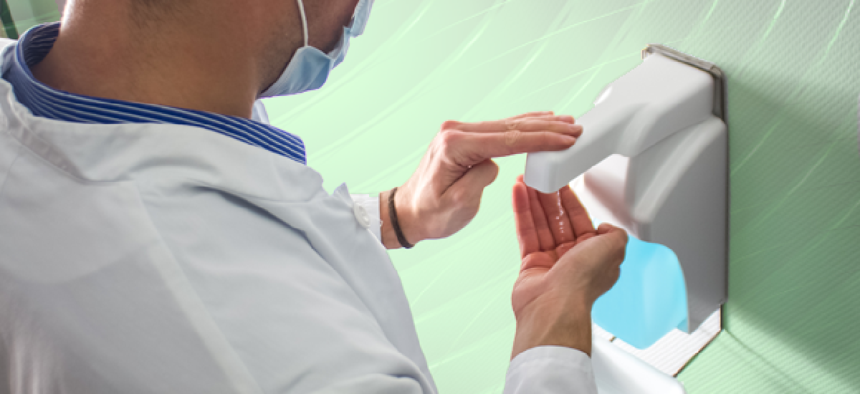The Internet of hygiene


Connecting state and local government leaders
Veterans Affairs wants to enhance its use of in-hospital location tracking and sensing technologies to improve patient hygiene and clinical workflows.
The Veterans Affairs Department wants to expand its use of location-tracking technologies to help it manage a range of clinical services, including finding wandering patients, streamlining emergency room workflows and monitoring how often clinicians wash their hands.
Real Time Location Services (RTLS) provide a significant benefit to the VA, the agency said in a recent request for information about the technology, from better patient care and satisfaction to improvement in staff safety and cost reduction.
RTLS is an umbrella term for location- and tracking-based technologies, including Wi-Fi based location finding, active and passive Radio Frequency Identification (RFID) and low frequency and infrared location technologies.
The VA currently operates a number of RTLS-type applications, including automated temperature monitoring, lab supply monitoring, sterile processing workflow and surgical instrument and other asset tracking applications.
Each application is integrated with Intelligent InSites software, according to VA. When there is a need for active RTLS tracking, existing CenTrak wireless sensing infrastructure is used, according to the VA. CenTrak hardware includes asset and staff tags, and infrared and low-frequency sensing infrastructure to improve location accuracy.
Now the agency wants to monitor and improve its hand-hygiene or HH rates. The VA said it has sanitizing dispensing stations at all sinks and throughout its facilities . According to the RFI, “it is expected that hand washing rates can be monitored as a staff member approaches a sanitizing station and activates a dispensing container.”
The system would have the ability to detect the dispensing of the sanitizing product and communicate via electronic staff tag to record the event. The system would monitor the hand sanitizing after restroom use, after scheduled breaks and after entering or exiting occupied patient care area, according to the RFI.
“Functionality for a system that has the capability of alerting or reminding staff to wash their hands is also desired,” according to the notice.
Other requirements of the RTLS include the ability to detect how long the employee sanitized their hands; the ability to run reports on hand-hygiene compliance as well as showing contact between patients and staff based on “room and bed-level proximity.”
“This shall allow for better management and prevention of the spread of contagious diseases,” the VA said.
The system would also “provide a visual indicator (LED on staff badge) to a patient indicating whether a technology-monitored health care worker has successfully completed a necessary hand hygiene event,” according to the RFI.
The VA said the scope of work for the HH program would call for the design, installation, configuration and testing of an RTLS-based HH solution, as well as surveys, updated facility drawings and system configuration documentation. The solution might be designed for a specific but so far undetermined facility.
An award to install the services is forecast for the second half of the 2015 fiscal year.




